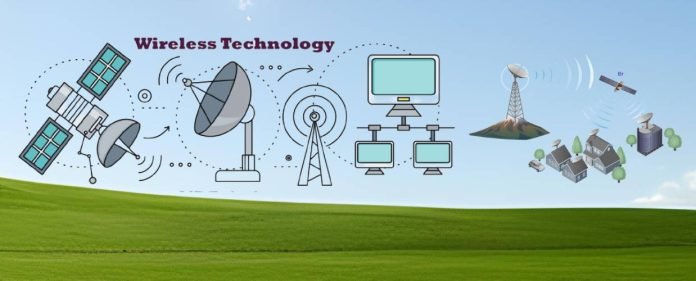In an era defined by connectivity and rapid technological advancement, wireless communication emerges as a transformative force that transcends barriers, connects the unconnected, and reshapes the way we interact with the world. This comprehensive exploration delves into the fundamental principles of wireless communication, its diverse applications across industries, its profound impact on global connectivity, and the challenges and innovations that define its evolution.
Unveiling the Essence of Wireless Communication
Wireless communication, a cornerstone of modern technology, epitomizes the ability to bridge physical gaps and foster seamless information exchange. This technology relies on transmitting data through the air via electromagnetic waves, eliminating the need for physical cables or wires. This technology encompasses a spectrum of wireless technologies, including radio frequency (RF), microwave, satellite, and more, each tailored to specific use cases and ranges.
The elegance of wireless communication lies in its capacity to dissolve physical constraints. It creates a network of connections that spans the globe, enabling instant communication regardless of geographical location. Whether it’s a phone call, a video conference, or a simple text message, wireless communication has become the thread that weaves our interconnected world.
Diverse Applications Across Industries
The pervasiveness of wireless communication ensures its application across a multitude of sectors, each harnessing its capabilities to achieve diverse objectives.
Telecommunications and Mobile Connectivity
Wireless communication is the backbone of modern telecommunications. It powers cellular networks, enabling individuals to communicate and access the internet on the move. From voice calls to video streaming, wireless technology keeps us seamlessly connected.
Internet of Things (IoT) and Smart Devices
The rise of the Internet of Things owes its existence to wireless communication. Smart devices, from household appliances to industrial sensors, rely on wireless connections to exchange data and operate intelligently. This interconnected network of devices enhances efficiency and automation in our daily lives.
Healthcare and Medical Applications
Wireless communication is a lifeline in healthcare, enabling the real-time transmission of critical patient data. Wearable health devices and remote monitoring systems rely on wireless connectivity to provide timely insights to healthcare professionals, improving patient outcomes.
Transportation and Automotive Industry
Wireless communication is pivotal in the automotive sector, facilitating vehicle-to-vehicle (V2V) and vehicle-to-infrastructure (V2I) communication. This technology enhances road safety by enabling vehicles to share data, optimizing traffic flow, and preventing accidents.
Industrial Automation and Industry 4.0
In the realm of industrial automation, wireless communication plays a central role. It enables machines, sensors, and control systems to communicate seamlessly, leading to real-time insights and adaptive automation that optimize manufacturing processes.
Profound Impact on Global Connectivity
Wireless communication is not merely a technological feat; it holds the power to transform societies and bridge digital disparities.
Bridging the Digital Divide
Wireless technology has emerged as a powerful equalizer, bringing connectivity to remote and underserved regions. It enables affordable internet access, empowering individuals with educational resources, economic opportunities, and access to vital services.
Disaster Response and Humanitarian Aid
During times of crisis, wireless communication proves to be a lifeline. It enables rapid communication and coordination among relief agencies, facilitating timely responses and aiding disaster-stricken areas with essential resources.
Remote Sensing and Exploration
Wireless communication extends its reach beyond our planet. Satellites equipped with wireless technology enable remote sensing, weather forecasting, and space exploration. They transmit valuable data from distant celestial bodies, enriching our understanding of the universe.
Challenges and Innovations
While wireless communication offers a plethora of benefits, it also confronts several challenges.
Spectrum Congestion and Interference
As the demand for wireless technology surges, the radio frequency spectrum becomes increasingly congested, potentially leading to interference and reduced performance. Advances in spectrum management, adaptive frequency allocation, and cognitive radio are addressing this challenge.
Security and Privacy Concerns
Wireless communication introduces security and privacy vulnerabilities, as data transmitted wirelessly can be susceptible to eavesdropping and unauthorized access. Encryption protocols, secure transmission methods, and robust authentication mechanisms are pivotal in safeguarding sensitive information.
Energy Efficiency and Battery Life
Wireless devices often contend with energy limitations, impacting battery life and overall device efficiency. Innovations in low-power communication protocols and energy-efficient hardware contribute to extending the operational lifespan of wireless devices.
Scalability and Network Reliability
With the proliferation of connected devices, the scalability and reliability of wireless networks are paramount. The advent of technologies such as 5G, edge computing, and mesh networking enhances network capacity, responsiveness, and overall robustness.
Conclusion: Weaving the Threads of Connectivity
Wireless communication is a testament to human innovation, transcending physical boundaries and forging a realm of interconnectedness. Its influence is far-reaching, transforming industries, narrowing inequalities, and propelling societies into a future where connectivity is a fundamental right.
As wireless technology continues to evolve, we embark on a journey toward a world where the unconnected are empowered, communication knows no borders, and the fabric of wireless communication weaves an intricate tapestry that binds us all in the digital age.



